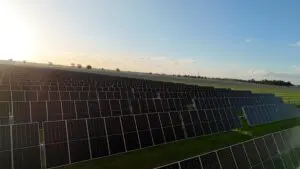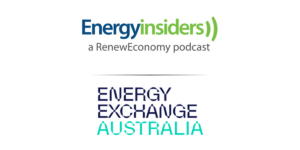ITP Renewables (ITP) is today launching a second phase of its independent battery performance testing at the Canberra Institute of Technology.
Supported by a $870,000 grant from ARENA, the purpose of the project is to verify manufacturers’ claims regarding the performance, integration, and installation of residential battery energy storage systems, and to disseminate the results to the public.
The rationale of the testing is that, particularly in remote applications where reliability is critical, energy system designers and end-users have been reluctant to transition to new battery technologies, despite apparent advantages.
In part, this reluctance is due is due to uncertainty about manufacturers’ claims, which often rely on lab-based tests run at a constant temperature and which lack independent verification.
Phase 1 of the testing commenced in August last year with side-by-side testing of six lithium-ion battery packs, an advanced lead-acid battery bank, and a conventional gel lead-acid battery bank.
Phase 2 adds a further eight lithium-ion technologies, as well as a zinc-bromide flow battery and an aqueous hybrid-ion battery.
Phase 1 batteries installed:
- CALB (Lithium Iron Phosphate), produced in China
- Ecoult UltraFlex (Advanced Lead Acid), produced in the USA
- Exide Sonnenschein (Gel Lead Acid), produced in Germany.
- Kokam (Nickel Manganese Cobalt), produced in South Korea
- LG Chem (Nickel Manganese Cobalt), produced in South Korea
- Samsung (Lithium Manganese Oxide / Nickel Manganese Cobalt), produced in South Korea
- Sony (Lithium Iron Phosphate), produced in Japan
- Tesla (Nickel Manganese Cobalt), produced in Japan/USA
Phase 2 batteries installed:
- Alpha Storion (Lithium Iron Phosphate) produced in China
- Ampetus Super Pod (Lithium Iron Phosphate) produced in China
- Aquion Aspen, (Sodium-ion – also known as a ‘salt water’ battery) produced in the USA.
- BYD BBox (Lithium Iron Phosphate) produced in China
- GNB Sonnenschein Lithium (Nickel Manganese Cobalt) produced in Germany
- LG Chem RESU HV (Nickel Manganese Cobalt), produced in South Korea
- Pylontech (Lithium Iron Phosphate), produced in China
- Redflow Zcell (Zinc-Bromide flow) designed in Australia and produced in the USA.
- Simpliphi (Lithium Iron Phosphate) produced in the USA
- Tesla Powerwall 2 AC (Nickel Manganese Cobalt), produced in the USA
Testing takes place in a climate-controlled room (the “Batt Lab”) at the Canberra Institute of Technology.
Within the Batt Lab temperatures are cycled through hot daytime and cool overnight temperatures, similar to what they would be expected to face in real-world conditions.
Testing Procedure
The key objective of the testing is to measure the batteries’ decrease in storage capacity over time and with energy throughput.
As the batteries are cycled they lose the ability to store as much energy as when they are new.
This phenomenon is typically referred to as capacity fade.
To investigate capacity fade, the lithium-ion battery packs are being discharged to a state of charge (SOC) between 5% and 10% (depending on the allowable limits of the particular Battery Management System (BMS), while the gel lead-acid battery bank is being discharged to a 50% SOC (i.e. 50% of the rated capacity used).
The advanced lead-acid battery is being cycled between 30% and 80% SOC. These operating ranges are in line with manufacturers’ recommendations for each technology.
Battery packs are charged over several hours (mimicking daytime charging from PV), followed by a short rest period, then discharging over a few hours (mimicking the late afternoon, early evening period) followed by another short rest period. In total, there are three charge / discharge cycles per day to accelerate their ageing.
Early results
Some initial results are presented below.
These are still too early to be conclusive with only the first six months’ worth of testing collected and analysed. ITP will publish the first year of testing results in August.
Capacity Fade

Capacity fade is evident for some of the battery packs under test, as expected.
However, for others, the trends are not yet discernible owing to the inherent variability in capacity testing results.
In particular, this variability arises because of imprecision in the SOC estimation conducted by the BMS of some packs.
We are conducting a deeper investigation of the atypical Samsung results in particular. The real trends will become clearer as time goes on.
From the data collected thus far, capacity fade is slightly more for the battery with the highest average temperature (the LG Chem pack).
High cell temperatures increase the rate of irreversible side reactions within cells. These reactions consume the “active” materials within the cells, reducing the available capacity.
The LG Chem battery has the highest energy density of all the packs under test, and has no fans or coolant loops to assist with heat dissipation.
While lab temperatures reflect expected real world ambient temperatures, the cycling regime is necessarily much more aggressive.
Hence, the high energy density reduces the ability of the battery pack to dissipate any heat generated as quickly as the other packs under test.
This causes the higher cell temperatures and likely explains the apparent capacity fade rate under the accelerated test conditions.
The two lead-acid technologies show minimal capacity fade thus far but these have undergone fewer equivalent-full cycles owing to the lower allowable depth-of-discharge.
In future reports, when fade is statistically significant, results will be normalised to account for the varying equivalent-full cycles completed.
Efficiency

Despite the limited data, already it can be seen that lithium-ion out-performs both the advanced and traditional lead-acid battery packs in terms of round-trip efficiency, despite lead-acid efficiency appearing higher than general expectations.
The initial data suggests that efficiency of 90-93% can be expected for either Li-ion NMC or LFP chemistries, and it is possible that a difference in efficiency will be apparent between the different Li-ion chemistries by the conclusion of the trial.
Efficiency data for the Samsung pack requires further validation before publishing, and will be included in the next report.
The advanced lead-acid battery pack (Ecoult) outperforms the conventional lead-acid (GNB) in terms of round-trip efficiency in the data collected thus far.
The ability of the advanced lead-acid to avoid the majority of the conventional lead-acid’s absorption charge phase is likely to be largely responsible for this result.
Oliver Woldring is a Senior Consultant at IT Power (Australia). More detail about the testing methodology and early results, including detail about charge acceptance and battery cell and pack failure is available at: batterytestcentre.com.au/









